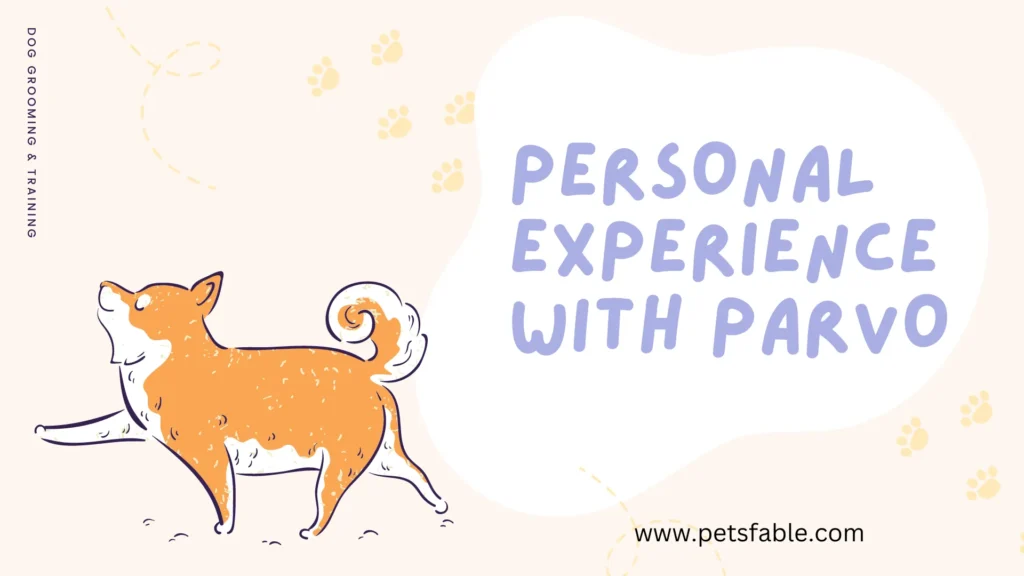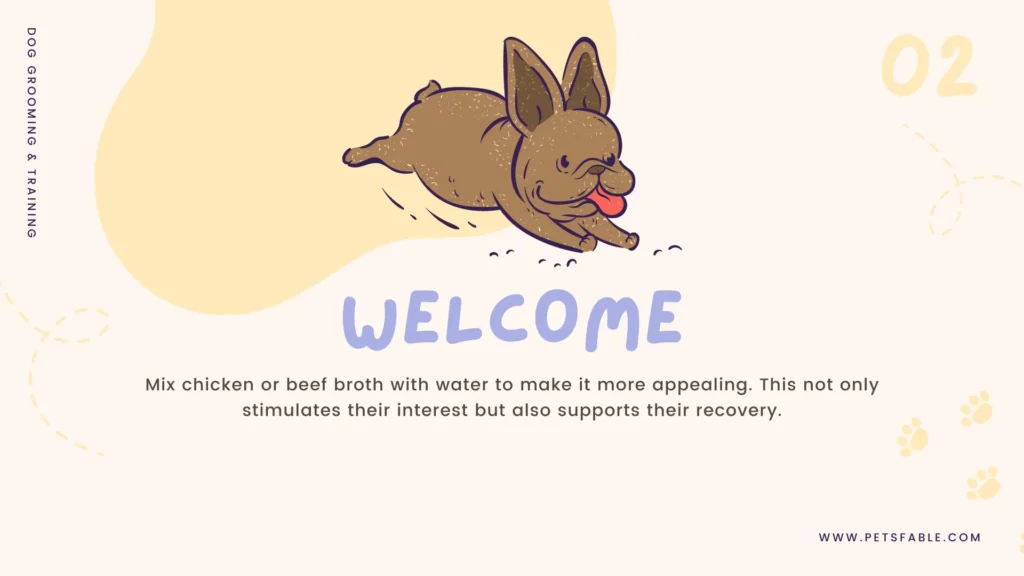Effective Hydration Strategies Against Parvo in Dogs
Battling parvovirus is a daunting experience for any dog owner, given its deadly and highly contagious nature. One critical aspect of caring for a dog infected with Parvo in Dogs is managing dehydration.
Veterinarians often recommend administering distilled water to the sick dog using a syringe. This method is crucial not only for hydration but also for enhancing the dog's chances of survival. If a Parvo in Dogs can accept water, it often indicates a measure of resilience in the face of the illness. My personal journey with my Parvo in Dogs infection highlighted the importance of swift, knowledgeable care.
Providing the right support can significantly impact the outcome of this severe health challenge, transforming fear into a manageable condition.
The Critical Role of Hydration in Treating Parvo in Dogs
Hydration is a beacon of hope for dogs suffering from parvovirus. Maintaining hydration is crucial as dehydration can significantly worsen the illness, potentially leading to fatal outcomes.
It’s essential to monitor hydration closely and ensure that dogs battling parvo receive the necessary fluids to aid their recovery.
Personal Experience with Parvo

When the oldest of my five puppies contracted parvo, we quickly sought veterinary care which included IV drips and medication. Early signs like her initial thirst and the distressing vomiting of a foamy substance were critical indicators of the severity of her condition.
Our veterinarian advised against giving her water directly due to the risk of complications, highlighting the delicate balance required in managing hydration for a dog with parvo.
This harrowing experience underscored the importance of following professional advice and vigilantly monitoring her condition during recovery.
Understanding Parvovirus
Parvovirus is a severe and often deadly viral infection that predominantly affects unvaccinated puppies. The virus is extremely contagious and can spread through direct dog-to-dog contact or indirectly via contaminated surfaces.
Symptoms include severe vomiting, lethargy, diarrhea, and fever, often progressing quickly and requiring immediate veterinary intervention. Early vaccination and strict hygiene are crucial in preventing this disease.
Transmission and Prevention of Parvo
Understanding how parvo is transmitted is vital, especially when managing a dog that is still drinking water but also exhibiting symptoms like vomiting. The virus can spread through direct contact with infected dogs or through environmental contamination. Vaccination is the primary prevention strategy recommended by veterinarians, highlighting its importance in safeguarding puppies from this aggressive virus.
Immediate Actions and Treatment Options
Prompt veterinary consultation is essential when a dog shows signs of parvo. Affordable treatment options, including outpatient care with subcutaneous fluids and medications to manage symptoms, can significantly improve survival rates.
Read more: 4-effective-ways-to-rehydrate-your-dog-post-surgeryVigilant care, including proper hydration and nutritional support, plays a crucial role in the recovery process, emphasizing the need for immediate and effective medical intervention to combat this life-threatening condition.
The Importance of Hydration in Treating Parvo
Hydration plays a crucial role in the treatment of dogs with parvovirus. By countering the dehydration that results from symptoms like vomiting and diarrhea, proper water intake is essential for aiding recovery.
Key Benefits of Hydration for Dogs with Parvo in Dogs:
| Benefit | Description |
|---|---|
| Prevents Dehydration | Ensuring regular and monitored water intake is vital to prevent the severe dehydration that can occur with parvo. |
| Supports Recovery | Hydration is essential for maintaining critical bodily functions, significantly aiding the recovery process. |
| Enhances Treatment Effectiveness | Adequate water consumption supports medical treatments by helping to eliminate toxins from the body. |
| Maintains Electrolyte Balance | Proper hydration helps to preserve electrolyte balance, which is crucial for your dog’s overall health during recovery from parvo. |
Understanding these aspects highlights why maintaining hydration is not just beneficial but critical for dogs suffering from parvovirus, impacting their recovery and overall health.
Step-by-Step Guide: Encouraging a Dog with Parvo to Drink Water
Step 1: Understanding the Importance of Rehydration
Recognizing the crucial role of hydration in combating Parvo is essential. Adequate hydration addresses severe dehydration risks, helps flush toxins, maintains body temperature, and supports overall health.
Regular water intake is vital, especially if your dog shows signs of weakness or lethargy, indicating the need for urgent rehydration.
Step 2: Coaxing Your Dog with Flavorful Vitality Boosters
Encouraging hydration in dogs with Parvo can be challenging. Adding palatable options to their water can greatly help:

- Natural Broths: Mix chicken or beef broth with water to make it more appealing. This not only stimulates their interest but also supports their recovery.
- Tasty Ice Cubes: Freeze diluted, low-sodium broth into ice cubes. This provides a fun way for your dog to lick and hydrate, soothing any oral discomfort.
- Electrolyte Solutions: Use vet-recommended electrolyte solutions to replace essential minerals lost during illness, aiding in rehydration.
These methods enhance hydration and are signs that your puppy is recovering from Parvo.
Step 3: Ensuring Optimal Drinking Conditions
Create an environment that encourages your dog to drink:
| Tip | Description |
|---|---|
| Location Matters | Place water bowls in easily accessible areas. |
| Cleanliness | Keep drinking bowls clean to entice your dog to drink. |
| Elevated Bowls | Use elevated bowls to reduce strain for dogs showing discomfort. |
Optimizing these conditions can significantly improve hydration efforts during recovery.
Step 4: Encouraging Frequent Small Sips
Promoting small, frequent sips can help maintain constant hydration without overwhelming your dog:
- Increased Availability: Position multiple water bowls around the house.
- Syringe Technique: Use a syringe for controlled hydration if your dog struggles to drink independently.
- Gentle Offering: Allow your dog to take small sips without forcing them, ensuring they stay comfortable.
This approach helps dogs remain hydrated and encourages them to drink voluntarily.
Step 5: Monitoring Hydration Levels and Seeking Veterinary Assistance
It’s vital to monitor your dog’s hydration status and recognize signs of dehydration such as dry gums, sunken eyes, and increased lethargy.
Don’t ignore these symptoms; they often necessitate immediate veterinary care. Collaborate with your vet to tailor a treatment strategy that enhances your dog’s recovery chances, ensuring each measure aligns with their specific needs during this critical time.
Adhering to these steps can be instrumental in managing Parvo effectively, turning a potentially perilous situation into a manageable recovery journey.
Debunking Myths About Parvo-Infected Dogs and Water
Myth #1: Parvo Spreads Through Contaminated Water Sources
It is a common misconception that Parvo can spread through contaminated water sources such as lakes or ponds.
However, the risk of Parvo in Dogs spreading in this way is minimal. While the virus can remain in the feces of an infected dog for a long time, its survival outside the host’s body, particularly in large bodies of water, is unlikely, making transmission through these sources quite rare.
Myth #2: Shared Water Bowls Are High-Risk for Parvo Transmission
More info: Are High-Risk for Parvo TransmissionAlthough there is a significant risk when parvo-infected dogs use shared water bowls, this risk can be effectively managed with stringent hygiene practices.
Regular cleaning and sanitizing of these bowls with bleach or other effective disinfectants can greatly reduce the risk of transmission. Using separate water bowls for infected dogs is also a prudent measure to prevent the spread of the virus.
Myth #3: Withholding Water Aids Parvo Recovery
Contrary to the belief that preventing infected dogs from drinking water helps them recover faster, restricting water access can actually harm their recovery.
Adequate hydration is essential for maintaining vital organ functions, supporting the immune system, and combating dehydration—all crucial for the health and recovery of parvo-infected dogs. Regular access to fresh water is vital for their overall well-being.
Myth #4: Boiling Water is Necessary to Kill Parvovirus
Boiling water is not necessary for dogs infected with parvovirus. The virus does not thrive in water and does not persist long in bowls or containers. Regular cleaning and appropriate disinfection are sufficient to manage any risk of parvovirus in water containers.
Conclusion
Effective management of parvo includes proper nutritional support. Products like high-calorie nutrical gel provide essential nutrients effortlessly and can be administered by placing some on the dog’s nose or mouth for them to lick off.
For dogs experiencing nausea or a lack of appetite, gentle food options like chicken soup can be beneficial.
Additionally, medications such as Pepcid AC and Pepto Bismol can help manage nausea, but it’s important to follow dosage recommendations carefully to ensure the safety of the dog, especially if they have specific health conditions.
FAQs: Parvo in Dogs
My puppy is not drinking water… is it parvo?
If your puppy isn’t drinking water, it could be due to several conditions, including parvo. Symptoms of parvo include watery stools, vomiting, fever, lethargy, and blood in the stools. To encourage hydration, try offering chicken broth without onions.
However, it’s crucial to consult a vet immediately, especially if your puppy’s gums are pale, which could indicate parasites or other health issues.
Why is monitoring water intake important for dogs with parvo?
Parvovirus causes severe vomiting and diarrhea, leading to rapid fluid and electrolyte loss. Monitoring water intake is essential to prevent dehydration and support recovery.
Should I force my dog with parvo to drink more water?
While hydration is critical for dogs with parvo, forcing them to drink can cause stress and potentially worsen vomiting. Encourage them to drink gently and gradually.
How much water should a dog with parvo consume daily?
The amount of water a dog with parvo needs varies based on their symptoms and overall health. Always consult your veterinarian for advice tailored to your dog’s specific needs.
Is there any special type of water I should give my dog suffering from Parvo in Dogs?
The type of water isn’t as crucial as ensuring it is fresh, clean, and free from contaminants. Regular, clean tap water is typically adequate.
Can tap water be harmful to my dog during parvo?
Tap water is generally safe for dogs with parvo if it’s free from harmful bacteria or parasites. If unsure about tap water quality, consider using filtered or bottled water as a precaution.
Are there any signs of dehydration I should watch out for in dogs with parvo?
Signs of dehydration in dogs with parvo include increased thirst, dry gums, sunken eyes, lethargy, reduced appetite, and decreased urine output. Consult a veterinarian immediately if you notice these signs.
How do I know if my dog is fighting parvo?
